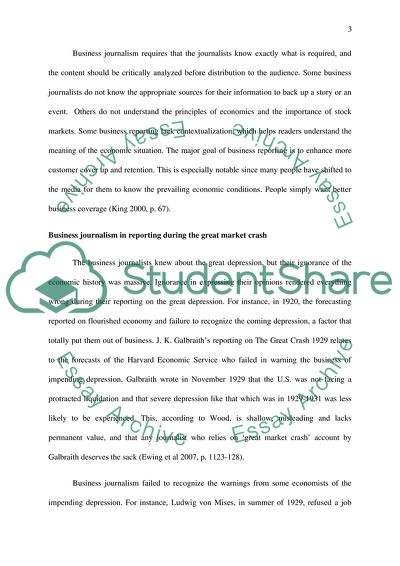Cite this document
(Failure of Business Journalism in Reporting During the Great Market Crash of 1929 Report Example | Topics and Well Written Essays - 1500 words - 1, n.d.)
Failure of Business Journalism in Reporting During the Great Market Crash of 1929 Report Example | Topics and Well Written Essays - 1500 words - 1. https://studentshare.org/journalism-communication/1795159-discuss-the-failure-of-business-journalism-in-reporting-the-great-market-crash-of-1929
Failure of Business Journalism in Reporting During the Great Market Crash of 1929 Report Example | Topics and Well Written Essays - 1500 words - 1. https://studentshare.org/journalism-communication/1795159-discuss-the-failure-of-business-journalism-in-reporting-the-great-market-crash-of-1929
(Failure of Business Journalism in Reporting During the Great Market Crash of 1929 Report Example | Topics and Well Written Essays - 1500 Words - 1)
Failure of Business Journalism in Reporting During the Great Market Crash of 1929 Report Example | Topics and Well Written Essays - 1500 Words - 1. https://studentshare.org/journalism-communication/1795159-discuss-the-failure-of-business-journalism-in-reporting-the-great-market-crash-of-1929.
Failure of Business Journalism in Reporting During the Great Market Crash of 1929 Report Example | Topics and Well Written Essays - 1500 Words - 1. https://studentshare.org/journalism-communication/1795159-discuss-the-failure-of-business-journalism-in-reporting-the-great-market-crash-of-1929.
“Failure of Business Journalism in Reporting During the Great Market Crash of 1929 Report Example | Topics and Well Written Essays - 1500 Words - 1”. https://studentshare.org/journalism-communication/1795159-discuss-the-failure-of-business-journalism-in-reporting-the-great-market-crash-of-1929.


